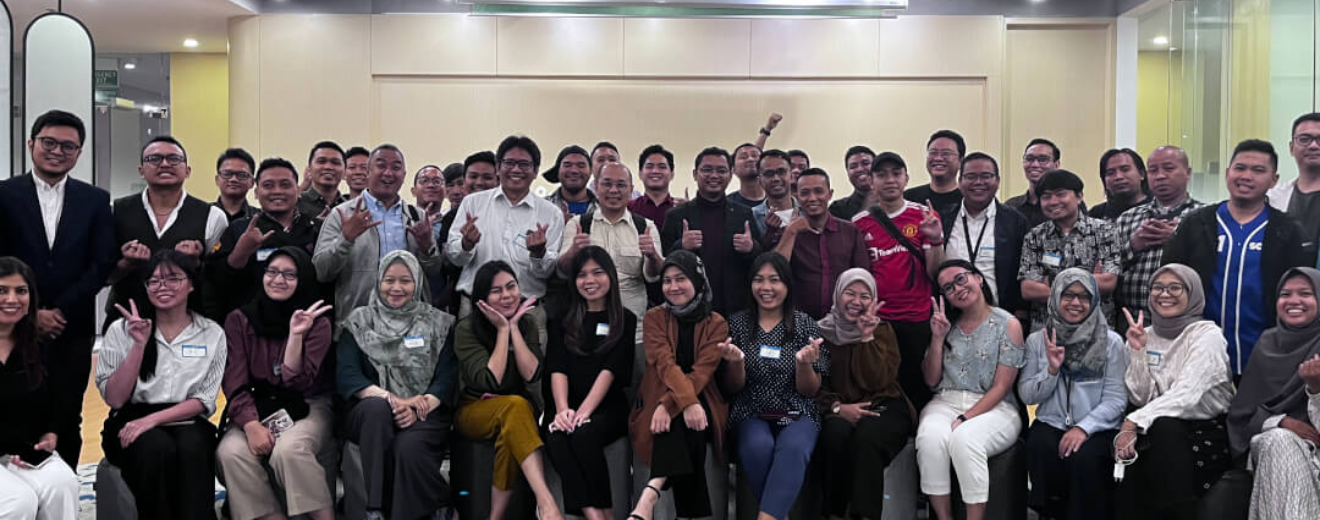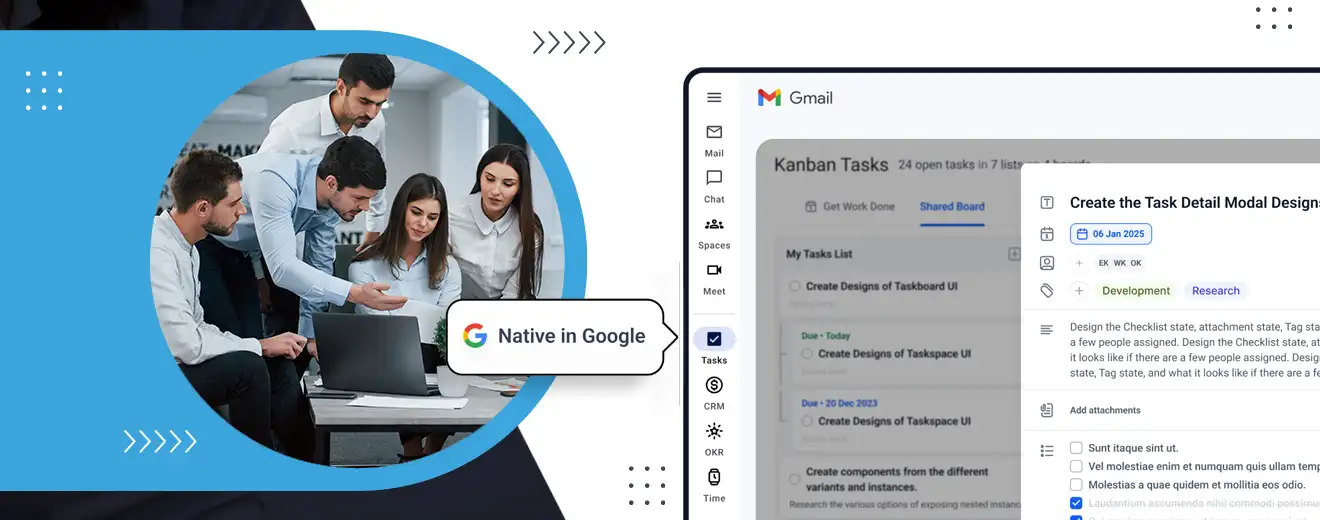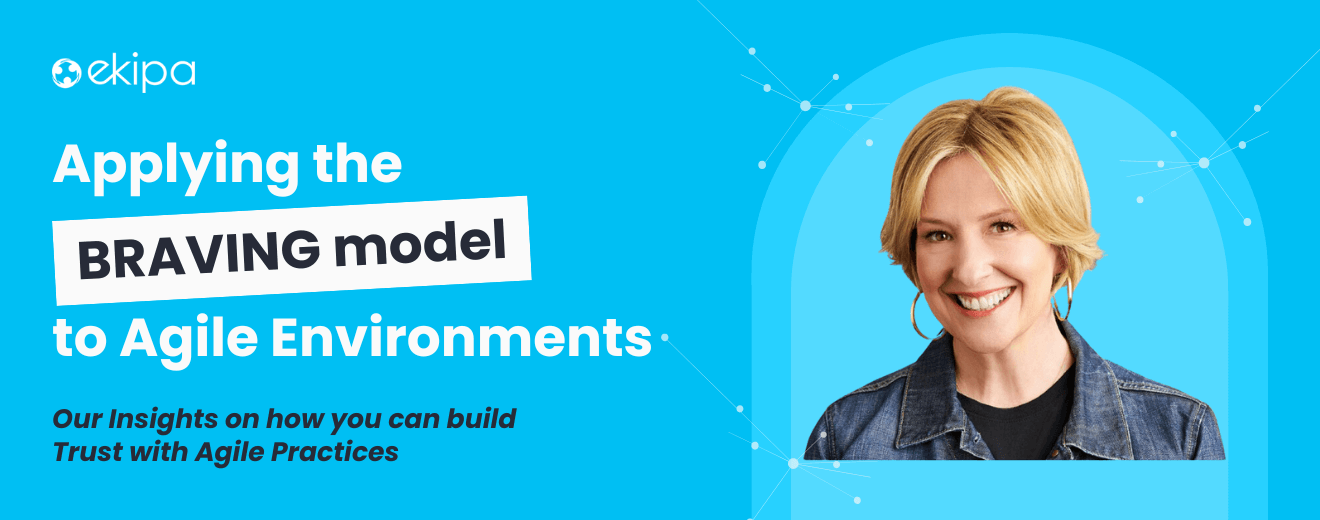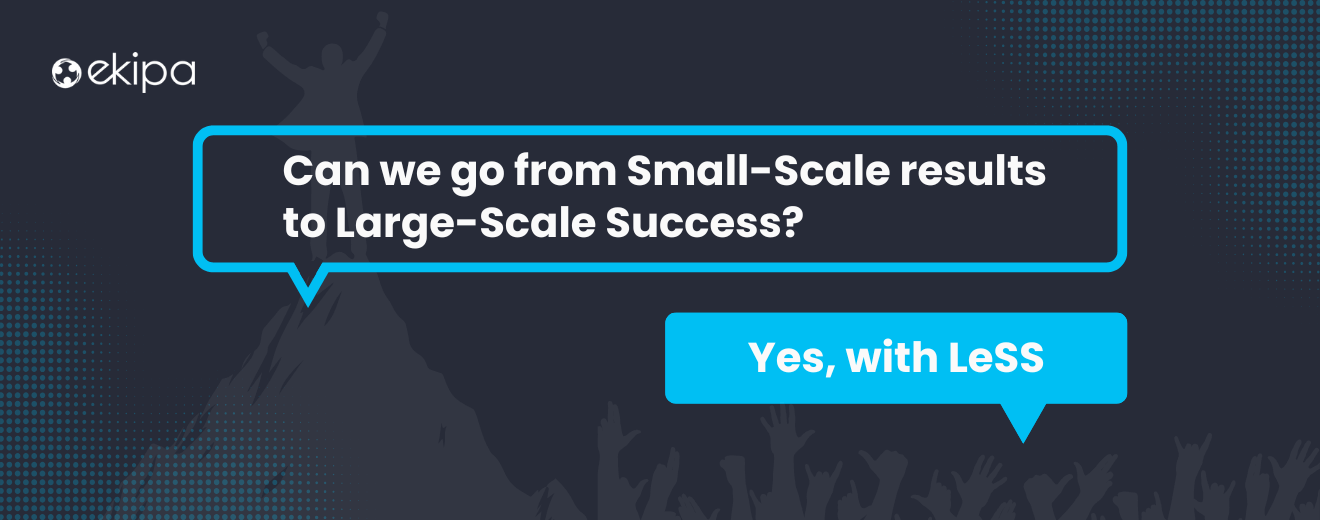
Over 40 participants joined me in talking about how agile meets design thinking. It was excited me. Despite having recently recovered from stomach acid issues that led me to the hospital emergency room, I was thrilled to share insights on Tuesday, October 17, 2023.
The 40 participants came from diverse industries and roles. But most of the roles related to agile include scrum master, product owner, head of digital transformation, etc. This event meetup hosted by Agile Circles Indonesia collaborated with Ayoconnect.
Although this event started from 4 PM to 8 PM Jakarta time, the participants were still excited. The event’s format was started by sharing an introduction from Ayoconnect. After that, my show was to share insight about how agile meets design thinking.
I don’t want the participants to sit and listen to me. I do want them to be active in the case study discussion. After my sharing session, the participants were divided into five groups. Each group will have a facilitator to drive the discussion. I was one of the facilitators as well.
Don’t worry if you can’t join the event because I have summarised what I shared with the participants in this blog.
Misconception of Implementing Agile and Design Thinking
In today’s fast-paced and customer-centric business environment, organisations constantly seek methodologies/frameworks that enhance efficiency and improve user experience. Recently, I participated in a workshop exploring the synergy between Design Thinking and Agile, two prominent methodologies in the world of product development and management.
At a superficial level, one might think integrating Design Thinking with Agile involves following the five stages of Design Thinking (Empathise, Define, Ideate, Prototype, and Test) and transitioning into Agile’s sprint ceremonies. This includes practices like creating empathy maps, developing personas, analysing the customer journey, and utilising Agile tools and ceremonies such as sprint planning, daily huddles, sprint reviews, and retrospectives.
However, the profound conclusion of the workshop was this: the success of implementing both models is not just about following a sequential process. It is deeply rooted in transforming organisational culture, mindsets, and behaviors. The tools, methods, and ceremonies are crucial but only as effective as those utilising them.
Mindset Shifts
Mindset is the main success factor to drive the change. Once the organisation’s team has a diverse mindset about agile and design thinking, it would be difficult to achieve the goal. The prerequisite mindsets that need to be mastered are these three mindsets.
- Customer-Centricity: The customer should be at the heart of every decision. By adopting a customer-centric approach, we ensure that our solutions meet real needs and solve genuine problems. It’s not about what we think is best but about what the customer values.
- Adaptability: In a dynamic environment, change is inevitable. A flexible mindset allows teams to pivot based on feedback and changing circumstances, ensuring the product remains relevant and valuable.
- Growth Mindset: Embracing challenges, persisting in the face of setbacks, and viewing effort as a pathway to mastery is vital. With a growth mindset, teams see failures as learning opportunities and constantly look for ways to improve.
Behavioral Shifts
Once we master the mindset, it will reflect on our behavior. Here are the behavioral shifts when the organisation implements agile and design thinking.
- No Assumptions: Assumptions can lead to solutions that are off-mark. Base decisions on evidence and real-world data, not just gut feelings.
- Speak by Data: Using data to drive decisions eliminates ambiguity. It offers a clear picture of what’s working and what’s not, leading to more informed decisions.
- No Jumping to Solutions: It’s easy to jump to conclusions, but resisting this urge is essential. Take the time to understand the problem thoroughly before brainstorming solutions. It ensures that efforts are directed effectively.
- Servant & Transformational Leadership: Leaders should aim to serve their teams, facilitating their success and growth. Transformational leaders inspire and motivate, driving change and innovation.
- Self-Managed Teams: Empower teams to take ownership of their work. When team members have autonomy and are invested in their projects, it fosters innovation and efficiency.
In conclusion, organisations must go beyond surface-level practices to seamlessly integrate Design Thinking and Agile. It’s about nurturing a culture that values empathy, adaptability, data-driven decisions, and servant leadership.
By focusing on mindset and behavior, companies can ensure that they’re not just going through the motions but are genuinely poised to deliver exceptional value to their customers. So, as we venture into this new era of product development, let’s remember: the people and the culture make the difference.
Has Your Organisation Implemented Agile and Design Thinking?
Once again, agile meets design thinking is about merging the ceremonial event and the organisation’s mindset, behavior, and culture. How about your organisation? How do you implement agile and design thinking? Is that just for merging the ceremonial event, or have you transformed your organisation’s mindset, behavior, and culture?
I realise the journey to transform the organisation’s mindset, behavior, and culture is not a short battle. It requires a long journey. And this is what Ekipa did to our client. We help organisations to transform in an agile way.
Thank you for reading this blog, and I will reward you with a free 1-hour session for your organisation. You can request any topic for that session or discuss your pain point with Ekipa’s agile coaches. Please click the banner below to request your reward. See you at the following interactive event!


.png)





